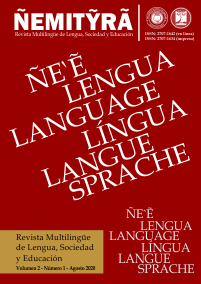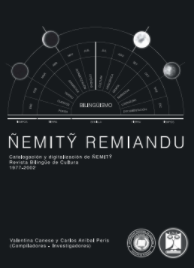Academic reading experiences of international students pursuing an MA-TESOL: a mixed methods study
Palabras clave:
Academic Reading, Mixed Methods Study, International ESL Students, Graduate Students, Master’s in TESOL (MA-TESOL)Resumen
The United States is a primary destination for international graduate students. For those whose first language is not English, academic reading is an obstacle that must be overcome to achieve academic success. This exploratory, sequential, mixed methods study investigates the academic reading experience of seven international MA-TESOL students in a southeastern U.S. university and identifies the most impactful factors within four consequential categories: reading challenges, reading adjustment, reading efficacy, and reading support. Findings suggest that with institutional, faculty, international and domestic peer support, and engagement with the reading process, students can overcome initial reading concerns and eventually acquire sufficient reading skills to complete their master’s program successfully. Implications suggest that academic reading support for international graduate students should nurture collaborative efforts, emphasize knowledge of reading strategies besides language proficiency, and promote parity or interconnectedness with academic writing.
Referencias
Anderson, N. J. (1991). Individual differences in strategy use in second language reading and testing. Modern Language Journal, 75(4), 460–472. https://doi.org/10.1111/j.1540-4781.1991. tb05384.x
Andrade, M. S. (2008). International graduate students: Adjusting to study in the United States. In K. A. Tokuno (Ed.), Graduate students in transition: Assisting students through the first year. No.50 (pp.71-90). University of Southern California.
Arthur, N., & Flynn, S. (2011). Career development influences of international students who pursue permanent immigration to Canada. International Journal for Educational and Vocational Guidance, 11(3), 221–237. https://doi.org/10.1007/s10775-011-9212-5
Bell, J. (2000). Framing and text interpretation across languages and cultures: A case study. Language Awareness, 9(1). http://dx.doi.org/10.1080/09658410008667133
Campbell, J., & Li, M. (2008). Asian students’ voices: An empirical study of Asian students’ learning experiences at a New Zealand university. Journal of Studies in International Education, 12(4), 375-396. http://dx.doi.org/10.1177/1028315307299422
Cheng, L., Myles, J., & Curtis, A. (2004). Targeting language support for non-native English-speaking graduate students at a Canadian university. TESL Canada Journal, 21(2), 50-71.
Chow, P. (2011). What international students think about U.S. higher education: Attitudes and perceptions of prospective students in Africa, Asia, Europe and Latin America. Institute of International Education. Creswell, J. W., & Plano Clark, V. L. (2018). Designing and conducting mixed methods research (3rd ed.). Sage.
Durkin, K. (2004). Challenges Chinese students face in adapting to academic expectations and teaching/learning styles of UK master’s courses: How cross-cultural understanding and adequate support might aid them to adapt. Discussion Paper. British Council.
Estacio, M. J. M. (2013). Bilingual readers’ metacognitive strategies as predictors of reading comprehension. Philippine ESL Journal, 10, 179-199.
Garcia, H. A., & Villarreal M. L. (2014). The “redirecting” of international students: American higher education policy hindrances and implications. Journal of International Students, 4(2), 126-136.
Grabe, W. (2009). Reading in a second language: Moving from theory to practice. Cambridge University Press.
Grabe, W., & Stoller, F. L. (2001). Reading for academic purposes: Guidelines for the ESL/EFL teacher. In M. Celce-Murcia (Ed.), Teaching English as a second or foreign language (3rd ed.), (pp. 187-204). Heinle & Heinle.
__________________________. (2002). Teaching and researching reading. Pearson Education Limited.
Guruz, K. (2011). Higher education and international student mobility in the global knowledge economy. SUNY Press.
Hall, T. R. (2013). Saudi male perceptions of study in the United States: An analysis of King Abdullah scholarship program participants. (Doctoral Dissertation, West Kentucky University). http://digitalcommons.wku.edu/cgi/viewcontent.cgi?article=1049&context=diss
Heyn, M. E. (2013). Experiences of male Saudi Arabian international students in the United States (Doctoral dissertation, Western Michigan University). Available from ProQuest Dissertations and Theses database. (Order No. 1428180578).
Hirano, E. (2015). ‘I read, I don’t understand’: Refugees coping with academic reading. ELT Journal, 69(2), 178-187. http://dx.doi.org/10.1093/elt/ccu068
Hirvela, A. (2016). Connecting reading and writing (2nd ed.). University of Michigan Press.
Jang, E., Mcdougall, D., Pollon, D., Herbert, M., & Russell, P. (2008). Integrative mixed methods data analytic strategies in research on school success in challenging circumstances. Journal of Mixed Methods Research, 2(3), 221–247. https://doi.org/10.1177/1558689808315323
Kingston, E., & Forland, H. (2008). Bridging the gap in expectations between international students and academic staff. Journal of Studies in International Education, 12(2), 204-221. https://doi.org/10.1177/1028315307307654
Koda, K. (1995). Cognitive consequences of L1 & L2 orthographies. In I. Taylor & D. R. Olson (Eds.), Scripts and literacy: Reading and learning to read alphabets, syllabaries and characters. (pp. 311-326). Kluwer Academic/Plenum Publishers. http://dx.doi.org/10.1007/978-94-011-1162-1
Kolić-Vehovec, S., & Bajśanski, I. (2007). Comprehension monitoring and reading comprehension in bilingual students. Journal of Research in Reading, 30(2), 198-211. https://doi.org/10.1111/ j.1467-9817.2006.00319.x
Maghsoudi, N. (2012). The impact of schema activation on reading comprehension of cultural texts among Iranian EFL learners. Canadian Social Science, 8(5), 196-201.
Maunsell, M. (2019). Academic prereading activity menus to support international ESL students in higher education. The CATESOL Journal, 31(1), 1–12.
McNamara, D., & Harris, R. (1997). Overseas Students in Higher Education. Routledge.
McLachlan, D. A., & Justice, J. (2009). A grounded theory of international student well-being. Journal of Theory Construction and Testing, 13(1), 27–32.
Moores, L., & Popadiuk, N. (2011). Positive aspects of international student transitions: A qualitative inquiry. Journal of College Student Development, 52(3), 291–306. https://doi.org/10.1353/ csd.2011.0040
Reid, I., Kirkpatrick, A., & Mulligan, D. (1998). Framing student literacy: Cross-cultural aspects of communication skills in Australian university settings. Curtin University of Technology, Centre for Literacy, Culture & Language Pedagogy.
Scarcella, R. C., & Oxford, R. L. (1992). The tapestry of language learning: The individual in the communicative classroom. Heinle & Heinle.
Spencer-Rodgers, J. (2001). Consensual and individual stereotypic beliefs about international students among American host nationals. International Journal of Intercultural Relations, 25, 639-657. https://doi.org/10.1016/S0147-1767(01)00029-3
Shen, Y., & Herr, E. L. (2004). Career placement concerns of international graduate students: A qualitative study. Journal of Career Development, 31, 15-29. https://doi.org/10.1023/B:JOCD. 0000036703.83885.5d
Teddlie, C., & Tashakkori, A. (2009). Foundations of mixed methods research: Integrating quantitative and qualitative approaches in the social and behavioral sciences. Sage.
Terrazas-Carrillo, E. C., Hong, J. Y., & Pace, T. M. (2014). Adjusting to new places: International student adjustment and place attachment. Journal of College Student Development, 55(7), 693-706. https://doi.org/10.1353/csd.2014.0070
Unrau, N. J., & Quirk, M. (2014). Reading motivation and reading engagement: Clarifying commingled conceptions. Reading Psychology, 35(3), 260–284.
Urban, E. L., & Bierlein, P. L. (2014). International students as a resource for internationalization of higher education. Journal of Studies in International Education, 18(4) 305–324. https://doi.org/10.1177/1028315313511642
Yuan, W. (2011). Academic and cultural experiences of Chinese students at an American university: A qualitative study. Intercultural Communication Studies, 20(1), 141-157.
Wilson, K. (2003). Assisting ANESB students to acquire academic language skills. In A. Bartlett & K. Chanock (Eds.), The missing part of the student profile jigsaw: Academic skills advising for Australian tertiary students from non-English speaking backgrounds. Academic Skills and Learning Centre.
Yauch, C., & Steudel, H. (2003). Complementary use of qualitative and quantitative cultural assessment methods. Organizational Research Methods, 6(4), 465–481. https://doi.org/10.1177/1094428103257362
Zhang, L. (2017). Learning reading. In A. Burns & J. Richards (Eds.), Cambridge guide to learning English as a second language (pp. 213-221). Cambridge University Press.
Zhang, Y., & Mi, Y. (2010). Another look at the language difficulties of international students. Journal of Studies in International Education, 14(4), 371–388. http://doi.org/10.1177/1028315309336031










